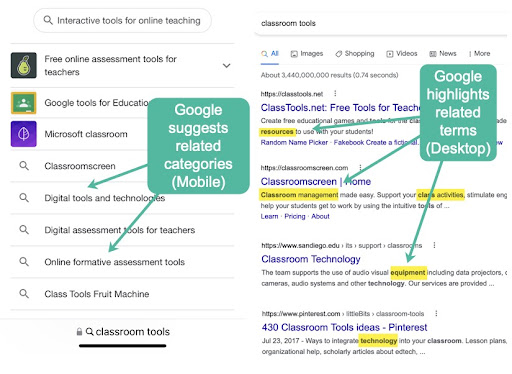
Content is crucial for just about any B2B business as it drives traffic and convinces your leads to become your customers. No wonder, most B2B businesses are increasing their content marketing budgets every year.
But do they use content marketing to its full potential? How do you create content that serves several goals, like traffic acquisition and rankings?
The big challenge with B2B content
While being extremely valuable to business success, B2B content is also extremely challenging for marketers to execute properly. The problem is twofold: Targeting.
Unlike B2C content where you usually target a single human being, in B2B you have to keep the whole group of decision-makers in mind. This group is usually referred to as a DMU (a decision-making unit) and, depending on your platform and your target organizations, it can include the head of marketing, CEO, IT representative, CTO, etc.
In other words, B2B content targets a group of decision-makers and normally takes more time (and more steps) to convert.
Creating convincing content that appeals to every single person within a DMU is hardly possible:
- CEOs may need to know how your product will save them money
- Head of marketing will need to make sure that your product solves an existing problem without making their department redundant. In this case, the best interests of the CEO may be in conflict with the best interests of the marketing team, and yet, the latter is likely to be the final decision maker, so you will need to keep their needs and challenges in mind.
- The IT team will have to ensure your platform is technically possible (it is possible to integrate into their technical environment).
Before you start creating your B2B content strategy for traffic generation, you need to know your decision-makers and be able to plan your content around possible conflicts.
In other words, plan your content assets that convey value and then decide which keywords you can optimize for.
Knowing your decision-makers
So what is the best way to know who you are targeting? You already know your target businesses in mind (those you created that B2B product for) but how to better understand their internal decision-makers?
B2B audience research is different from B2C audience research: You can hardly apply your web analytics demographics info because you have to keep all those intra-organizational levels and politics in mind.
To better understand your target DMU, try several of these options:
- Talk to your sales and customer support teams. They already interact with your potential and current customers on a daily basis. Let them describe their contacts and who those report to. Get all the details they can share, including their frequently asked questions and common challenges.
- Survey your customers. Using on-site and on-registration surveys will help you collect more data on the size of companies you are dealing with and your actual users’ roles within those companies. There are a variety of plugins allowing you to integrate surveys with your content.
Additionally, inbox Insight offers a handy checklist for you to organize your data and better understand your target DMUs.
From there, start creating a list of problems each person within a DMU may have and how your product may solve all of them. This is where matching those problems to searchable keywords is the required next step.

Planning your keyword strategy
It is not often easy to identify how people may be searching for solutions and answers to relevant problems. While there’s no such a thing as an ideal word count which would work in every niche, try and create a resource that will answer several related questions.
Google is now mature enough to steer your search into a more popular direction, so I suggest starting your keyword research by simply searching Google. Type the search terms as you yourself would use them, and pay attention to:
- What Google Autocomplete suggests in the search box
- “People Also Ask” boxes and featured snippets
- Words Google shows within search snippets in bold (on desktop)
- Google’s “Related Searches” and (on a mobile device) Google’s categories that usually appear below organic search results:

All of these will help you collect the core terms your target B2B customers are using when searching for solutions to their problems.
From there, use keyword research tools to extend your core terms and discover even more related terms.
Keyword clustering is a good way to better organize your keywords by intent and identify some common searching patterns. Here’s a good guide on using those identified keyword clusters to create a content strategy that will apply in both B2B and B2C.
Promote and repurpose your B2B content
Publishing your content is a good first step to start generating some organic search visibility. But unless you promote your content, you will not achieve much as search engines need more signals than just useful copy.
Promoting your content is a whole new topic that has already been covered in much detail. A lot of content promotion ideas apply to both B2B and B2C content, including social media sharing, email marketing, and more.
When it comes to the B2B niche, some of the more effective content and link acquisition methods include:
- Organic promotion via email messages. Emailing is the main source of communication for most B2B businesses, so including your recent or most important content assets in your email signature will get you some clicks and possibly even backlinks. Wisestamp will help your employees create a cool signature that can pull your recent articles. They offer some cool email signature examples for you to get inspired.
- Content repurposing. With so many complicated DMUs in mind, you will need different content formats to cater to all of them. Making your content possible to download as a PDF file (to make it shareable within a company) is the first step. You can make that happen using Google Docs. Another idea is to turn your content into a video format which is pretty easy using Movavi. This would expand your reach to video-only platforms, like Youtube. Additionally, consider reusing your visuals (graphs and screenshots) in a PowerPoint format to create content to promote on Slideshare and Linkedin. Venngage makes it very easy. In other words, turn your content into lead magnets!
- Webinars make excellent B2B content because they can be used at every step of the sales funnel. You can live stream them, turn them into many videos, transcribe to create text content, enable lead generation forms to engage your prospects. There are lots of platforms that allow you to do all of that.
- Use email marketing. Email automation is an integral part of any B2B pipeline. Here are a few examples of email marketing campaigns to get you started with yours.
Creating optimized content that targets different roles and comes in different formats will require a lot of organizational efforts.
Conclusion
Content planning and creation take a ton of time, so it makes sense to set up a content marketing strategy that serves several goals, like organic traffic and sales generation. Hopefully, the above tools and steps will show you some direction. Good luck!
Ann Smarty is the Founder of Viral Content Bee, Brand and Community manager at Internet Marketing Ninjas. She can be found on Twitter @seosmarty.
Subscribe to the Search Engine Watch newsletter for insights on SEO, the search landscape, search marketing, digital marketing, leadership, podcasts, and more.
Join the conversation with us on LinkedIn and Twitter.
The post How to create B2B content that ranks and drives sales appeared first on Search Engine Watch.

